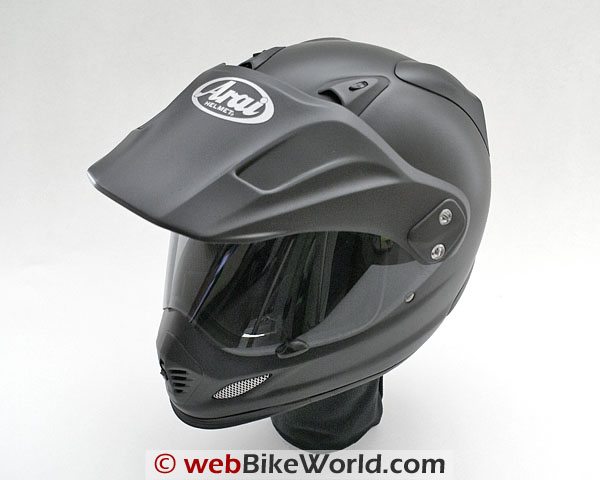Although most of the changes have seemingly been oriented towards style, they have brought about tangible benefits to the user.
Not a perfect helmet in terms of air flow management and internal noise control, but still far better than many.
Although the XD3 is no longer unique in the market, it is still unique in appearance.
With its impeccable finish and near perfect fit, it stays ahead of the pack.
This is an extremely high quality helmet reflecting sound design and superb assembly.
But any prospective owner will need to reflect on its premium price and make the decision. For this rider, it is still worth it.
Is it or isn’t it? If one is familiar with both the Arai VX-PRO or VX-Pro3 motocross helmet and the Arai XD (XD = “Crossover Design” in Arai-speak) helmets, the new XD3 as marketed in Canada is bound to raise a couple of questions about its lineage.
It initially appears to be just an updated XD with a couple of surface changes but in the hands of someone familiar with both models it seems that an evolution of sorts may be taking place.
The arrival of the first XD3 had been eagerly anticipated especially when it seemed that the new version would perhaps not be available any time soon.
Thankfully, the first unit to be received by the dealer and subsequently procured was the correct size for me (large) and finished in Black Frost — simply irresistible.
Initially, the objective of this evaluation was to provide an update to the original XD article done back in April 2006.
But based on observations made in the original article and the changes found in this latest model, a more detailed review and evaluation was deemed worth compiling.
Market survivability of the XD-series seemed to be an issue early last year.
But based on the number of helmets spotted on the heads of North American adventure-touring riders and Arai’s updates to the design, one might expect that the new model will be around for awhile in some form.
Some of the popularity of the XD-series has obviously come about due to the exposure the helmet has received in several popular adventure videos, such as “Long Way Around”.
But an informal survey I conducted indicates that the helmet really is seen as a viable alternative in addressing multiple requirements.
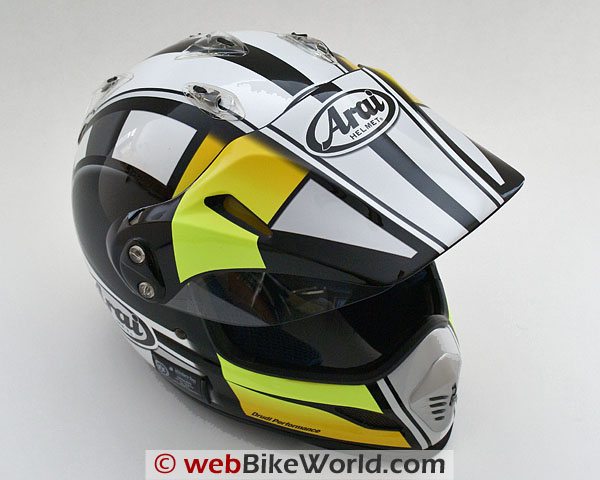
The solid colors (there are more to choose from this year) seem to be the most popular and the eye-catching Challenge yellow/black/white motif from last year is now gone.
It has been replaced with the more subdued “Luster” graphics in red, yellow and silver in the North American market. As of the date of publication, the XD3 has not yet made it to Europe. Arai continues to sell the original XD, called the “Tour X-2” in that market.
There are now three XD helmets in the household; two in the ’07 Challenge Yellow pattern (photo above) and now the XD3. The ’07 units have provided excellent service. With a week or so of wearing in, they become even more comfortable.
From a comfort perspective, it is important to get the right size cheek pads to avoid undue pressure on the upper jaw area; one reason why helmets should always be tried on for proper fitment, before purchase.
With the peak installed, the helmet is somewhat noisier than the Arai Corsair or the Nolan N102 (review) helmets that comprise the primary head protection selection right now.
However, it is easily the most comfortable of all three, especially when it warms up outside, thanks to an air-flow management system that really works.
Something else I discovered, and not by accident, is that with its peak removed, the XD is one of the sleekest and quietest helmets around, especially at higher speeds.
The dual-purpose or “crossover” personality of the XD really comes into its own during mixed environment (on/off road) riding.
That large peak provides plenty of shade and protection from flying stuff and when desired or needed, the shield can be removed and goggles used instead.
A Closer Look
At the front, the chin-guard now includes a unique “Pull-Down Airflow Spoiler” that helps minimize wind noise.
Another noticeable change is the “Dual Intake/Dual Exhaust Ventilation System” with diffusers that resides on the top-side.
Most of the changes have apparently been designed to focus on air-flow and air-flow management to reduce noise levels while increasing overall comfort of the helmet, which in turn fosters rider well-being and safety.
Speaking of safety, there is one other change that might go unnoticed by many, but which highlights another concern when wearing a motorcycle helmet — removal in case of an accident.
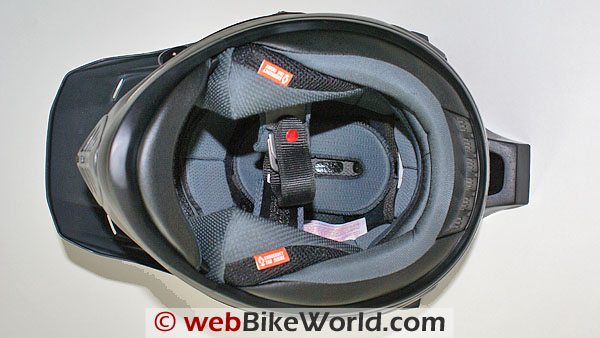
A Feature You Hope Won’t Be Used
New to the Arai VX-Pro3 and XD3 models are emergency release cheek pads designed specifically for MX and off-road motorcycle helmets.
Reflecting Arai’s claim to “build the best helmets possible”, the cheek pads were developed to allow easier access to an inured rider’s head and face area by trained medical technicians.
The quick-release cheek-pads slide out easily via the bright orange integrated pull-tabs built into the underside of the pads along the outer edges.
The presence of this feature is indicated by the bright orange hard-to-miss notification tabs sewn into the bottom centre seam of the cheek-pad.
Score: Excellent, an innovative feature that should be a standard on all helmets.
Air-Flow Management Changes
Arai’s marketing material can be confusing regarding the number of vents used in the XD3’s ventilation system.
The Arai website, recently updated, identifies a total of 13 vents (7 intake and 6 exhaust) for the XD3, which is the same number they listed for the original XD, even though there is one less top vent on the new model
One difference is due to the removal of the top centrally located exhaust vent that appeared on the XD.
My XD3 has five real intake vents — the centre chin-piece vent; a left- and a right-side wire-mesh side intake and two individual intakes (with diffusers) on the top.
Arai’s count may be including the small vents on each side of the chin-bar (that now have the sliding covers), but they are actually fed by the left and right side wire-mesh intake vents and as such are more exhaust or pass-through than intake, and Arai may also be including the two cut-outs on the peak
As for exhaust, my XD3 has really only five real exhaust vents: two on the top, one on each side at the lower rear and one at the rear.
But if Arai counted the two small side chin-bar vents as exhaust vents (as I did), which makes seven, and added to my five intake, this yields a count of 12 (a count validated by other owners).
Another subtle change is that the small interior left and right side chin-guard vents, fed by the wire-mesh covered intakes on the front edges of the chin-guard now have their own sliding covers.
This small but effective addition, in combination with the chin vent shutter system now allows vent air intake flow to be completely controlled.
The “Pull-Down Airflow Spoiler” under the chin guard is another “new” feature of the XD3. Older Arai helmets had this feature, but in recent years is was removed.
The addition of the spoiler to the XD3 is probably an attempt to help manage lower air flow and reduce noise levels, but it might also possibly signal a return of the feature to the Arai helmet lineup, which from my perspective is welcome
On the top, the ventilation system features four vents, a pair of intake and exhaust vents on the left and right sides replace the five-port system used on earlier models. The new layout is more effective, but it has a slightly higher profile, which introduces other issues.
Each top-side vent is adjustable and fully closeable.
Another feature shared with the Arai VX-PRO motocross helmet is that the large rear units are diffuser style, so the covers are removable for cleaning or replacement.
The little red tab on the top of each vent control indicates the “what” — the manual describes the “how”.
The two lower exhaust vents on the sides of the shell have been enhanced with small covers with a rearward-facing opening, apparently to enhance the air-flow management and to add a bit more flair to the look of the helmet.
The rear exhaust channel is still found on the back lower edge of the helmet — unobtrusive but very effective in drawing more hot air out from the helmet interior.
Comparatively, the RX-7 Corsair model used to be the ventilation champion, but it seems the new XD3 might just take over the top spot among Arai helmets. Only time — and temperatures — will tell.
To address a specific observation raised in the original evaluation, the vent rocker switches and rear sliders on the two ’07 models have held up well with extended use, as they have on all Arai helmets I have used.
The new XD3 controls appear to be just as strong as those found on the XD, and although the rocker switches are small, they can still be opened and closed with virtually any style of glove and rocker action is very positive.
Score: Very Good — overall progress has been made, but my feeling is that the top ports need to be revisited.
| wBW Lightbox: Arai XD3 Helmet – Click photo to view. | |||
|---|---|---|---|
 |
 |
 |
 |
| XD vs. XD3 Side | XD vs. XD3 Rear | XD vs. XD3 Peak | XD3 w/Interphone |
 |
 |
 |
 |
| XD3 Rear Exhaust | XD3 Front | XD3 Peak | XD3 Right Side |
Fit and Finish
For the North American region, sizing remains quite constant across lines and models, and differences can typically be attributed to shell shapes and the type of liner used.
I’ve worn an Arai size large virtually since Day One of Arai availability in North America, and although the exact number of Arai helmets that have passed through my inventory cannot be remembered, the one constant — size — has not changed.
This point is made specifically to address size and shape inconsistencies that seem to occur annually with so many other brands.
The XD3’s styling reflects a very discreet approach, which is appreciated from time to time.
The sometime obtrusive and larger-than-necessary Arai decals are absent, except for one matte finish Arai sticker on the peak and low-gloss silver information stickers on the back.
The finish is typical Arai — excellent in every detail. The matte finish on this XD3 is unblemished and without fault.
Having examined well over 25 XD helmets over the last two years, looking for rough edges, unfinished parts or shoddy production, only one instance was ever noted. I have now also inspected ten of the new XD3 units and all of them are absolutely flawless.
Score: Excellent. I have found that standards in sizing and finish are extremely high among all Arai models.
Fit, Sizing, Shape and Comfort
Based on the Arai shell shape standards the XD3 is in the “round oval” category, as are the RX-7 Corsair, the Arai Vector (review), all of Arai’s open-face helmets and the VX-PRO and VX-Pro3.
Using the webBikeWorld head shape category chart (see the Motorcycle Helmet FAQ page), the XD3 is probably between the Earth and Oval shapes. Just remember that the internal construct makes a difference as well.
Helmet attachment is via the standard D-ring and strap. The date of manufacture can be found on a tag mounted on the D-ring strap as well. A change from the earlier XD is that the chin strap cover is now removable for washing or replacement.
The excess length of chin strap is secured via a button snap to the D-ring strap.
The D-ring and strap assembly are long enough to provide easy access and should allow fitting by just about anyone.
It might seem like a given that the attachment assembly is good, but as observed with other helmet brands recently (Zeus ZX-2100B) it is obviously still not seen as a critical feature that must be gotten right the first time.
The head comfort liner and cheek-pads are fully removable and replaceable.
Arai claims that their “Dry-Cool” material uses “micro water cells” to provide superior heat transfer from the head, keeping the head dryer and cooler, and based on my experience, it does work.
Another benefit is that the liner dries much faster, always appreciated when using a helmet on a daily basis.
Another feature, not often appreciated, is provided by the fully removable liner system. The liner components can be removed easily for cleaning and replacing components.
More importantly, this feature allows the helmet to be custom fitted to the owner by allowing the helmet liner shape and size to be considered with the other factors necessary for selecting and fitting a helmet.
It is part of an overall Arai strategy to make sure that a rider can get the precise fit needed; other manufacturers also offer this capability — something to consider when choosing a helmet.
Arai has always offered a wide range of helmet liner components in varying size and thickness. Liner size and thickness labels are found on the underside of removable liners.
If a fitment thread seems to be taking shape here, it was intended.
Arai is still, in the humble opinion of this rider, the leader in providing fitment advice and options related to requirements and intended use, head size, shell shape, sizing by model, interior lining type and interior comfort liners for cheek-pads and ear cups.
Arai actively supports their distributors and resellers in supplying liner options for fitment and replacement components, all of which can greatly benefit owners.
Score: Excellent, Arai remains at or near the top in this category.
Face Shield and Visibility
The clear face-shield provided is the standard Arai version.
Arai claims better vision and UV protection with less distortion than other brands, and while there is no disputing that Arai shields are typically very good, they have real competition in today’s crowded helmet marketplace.
In comparing several different shields (Arai and others) it is common to find small defects or distortion – observations that can be perhaps attributed to manufacturing processes or quality-control (QC) issues.
When possible, the buyer should always check for shield fit, function and visual correctness before closing the deal.
The Arai Twin-Cam shield pivot system enables the low profile shield to operate fully beneath the mounted peak. The lower profile results in better aerodynamics and sleeker appearance.
The design also allows the shield to be used alone without the peak, yielding a very sleek and aerodynamic unit.
While much has been written about the patented Arai Super-AdSis and updated LRS Shield Release System, as long as the shield is properly fitted and the mechanism kept clean, it works just fine.
However, when compared to other shield mounting systems, it does not stack up as well as it once did.
Score: Good — quality remains high, but competitor products are as good or better, especially regarding optics.
Another Peak of Perfection
The revised sun shade peak, reflecting features found on the VX-PRO, has a slightly higher profile than the 2007 variant which allows increased air flow between the helmet shell and the peak.
The spoiler vents are now larger and horizontally placed on the front indent surfaces of the peak.
These changes have really served to reduce helmet noise, helmet lift and buffeting compared to the ’07 model — even though I never found helmet lift to really be much of an issue anyway.
The helmet is more stable in the cockpit airspace and venturing the head outside of this airspace is far less strenuous, or hazardous, than it once was.
Arai still warns, in very prominent fashion on everything, about the possibility of helmet lift when riding at high speeds due to the peak.
But, as with the original evaluation the peak never really causes severe problems, even when riding an unfaired motorcycle.
The peak finds favour as a sun shade, especially for this light-sensitive rider. In the right conditions, all it takes is a slight adjustment in the head angle to completely block glare, something very important, especially when riding in changing terrain and forestation.
Speaking from experience, when the trail taken becomes loose dirt, gravel or pure mud, the peak will also be appreciated for its other property — the ability to keep (most) of the large flying or flung things from landing on the face-shield, always a good thing.
Score: Excellent — the new edition just plain works. It is the equal of the Zeus ZS-2100B peak.
 Noise Levels
Noise Levels
Although my feeling is that the ’07 XD model is noisier than the Arai Corsair, the Nolan N102 (review), the Zeus ZX-2100B Cross-over (review), the VX-Pro and a few other helmets I’ve worn over the past year, the subtle changes made to the XD3 have worked in reducing its overall noise levels.
This new version is far better in managing noise overall than the original XD.
The revised peak, updated and reshaped intake vents and diffuser exhaust assemblies have all served to reduce turbulence created at the front and over the top of the helmet.
As a result, some of the high-pitch whistling has been dissipated, but it is still there.
For comparative purposes and appreciating the MP3 audio sample provided as part of the XD evaluation, both the ’07 and the ’08 XD3 models were compared, using one basic route covered on three different motorcycles, all with varying degrees of protection.
The three motorcycles used were the 2007 BMW R1200GS Adventure with its superb windscreen, a 2007 Kawasaki Versys (review) equipped with the Vario Touring Shield and a 2007 Z1000 with its minimalist stock wind-foil – no wooden rocking-chair horses for this rider.
Finally and although not recommended, all trials were conducted with and without ear-plugs — this was done for a specific purposes…read on.
On the near-naked Z1000, noise levels around and inside the XD3 are still loud, although ear-plugs really do help.
While the XD3 is quieter internally than the ’07 version, the larger top vents actually seem to exacerbate the whistling sound, more so than the smaller ’07 vents.
As with the original review, putting a piece of tape over the top intake vents totally eliminates the whistling.
The shape of the Versys prow and the Vario Touring screen with the adjustable spoiler proves to be a much quieter environment when wearing both versions of the XD.
Between the two helmets, the XD3 is slightly quieter and the whistling is far less prevalent, due to better windscreen protection.
The Vario Touring windscreen is the biggest positive in this situation because it can be adjusted to tune the airflow. By way of example, when wearing ear-plugs, some low frequency audio vibrations were felt inside both XD helmets.
But by varying the position of the spoiler from its highest setting to the lowest, the vibration could be virtually eliminated.
On this setting, the helmet is sitting pretty much smack dab in the middle of the air stream and there is virtually no buffeting and no strain in maintaining that position.
The XD3 in particular can be angled up or down a few degrees without invoking any gyrations as the peak becomes less an airfoil and more an airbrake.
The last trial run was on the Beemer. It has a superb windscreen that when set to its middle position provides a pretty good cockpit environment, even for taller riders. This environment is pretty friendly to both XD units, but making it three for three, the XD3 wins, by a narrow margin, the overall noise category.
While the whistling experienced on the first two motorcycles is pretty much non-existent on the Beemer behind that screen, another issue did raise its head — low frequency audio vibrations.
Similar to that experienced with the Versys, these vibrations can be pretty severe, especially when wearing standard foam style earplugs.
Informal research indicates that there are two culprits, and two solutions.
The main culprit relates to the fact that many GS and GSA windscreens vibrate on their mounts (especially with time and use) and also create turbulence along the lower edges. Both these conditions become part of the cockpit environment and thus the helmet environment.
Acknowledging that the cure is not a recommended long-term solution, stopping the audio vibration can be simple – grab the windscreen with the left hand and the vibrations will typically cease almost like a light switch being thrown.
Curing the turbulence will likely take a bit more work…one reason why Tobinators and other related fixes are (still) so popular.
The other culprit concerns the internal helmet environment — it is absolutely essential to wear the right type of ear plugs, i.e., effective and comfortable. There really is a difference.
Be sure to visit to the wBW Motorcycle Helmet Noise page for more information on this important topic and also visit the wBW Earplugs and Hearing Protection page for more information on choosing and wearing earplugs.
Note also that as always, your experience with this helmet’s noise levels may be different, depending upon many factors, including your head shape, motorcycle configuration, prevailing winds and even the type of motorcycle clothing you wear.
Score: Good to Very Good
Final Noise Observations
Although the peak on many crossover helmets is seen to be the culprit, the peak on the XD and especially the XD3 is not.
The increased clearance between the front edge of the helmet and the relocated air ducts really work well together.
Unless one purposely leans out considerably or does an exaggerated shoulder check, the peak does not impose a penalty. Within the cockpit environment, the combination remains supported and neutral in the airstream.
If one is not used to this type of helmet, then yes it will take a bit of time to get totally comfortable with it.
A somewhat final, and disappointing point, is that sadly, both the XD and the XD3 are as quiet or quieter when not using ear-plugs, at least for this rider whose hearing is still pretty good.
Removing the earplugs brings about the biggest reduction in helmet noise levels when wearing the XD3 on the Beemer – bummer.
So, where does all this lead?
Well, in having used the older XD extensively and now having racked up some significant saddle time with the new XD3, the new version is judged to be more comfortable and slightly quieter overall, due in large part to the redesigned peak.
But, the whistling from the top intake vents is still there and in some conditions, worse than before. Referring back to the Zeus ZS-2100B evaluation, some lower side shaping, i.e., air flow indents, might just help, along with a minimalist approach to the top vents.
Helmet Weight and Balance
The original XD in size XL tipped the scales as 1693 grams, or 3 lbs. and 11.75 oz. This XD3 in size L weighs in at just over 1675 grams (using a different scale).
This puts the XD3 in about the top 1/3 of the 92 helmets we’ve weighed to date on the wBW Motorcycle Helmet Weights page.
Here’s a portion of that chart, showing some of the helmet weights of the XD3’s neighbors: Craft R2 Aerospeed (3 lbs. 10-1/2 oz.); AGV Miglia Flip-up (3 lbs. 10-3/4 oz.); HJC Sy-Max Flip-up (3 lbs. 10-3/4 oz.); Zeus ZS-2100 B Enduro (3 lbs. 11-1/4 oz.); Arai XD Enduro (3 lbs. 11-3/4 oz.).
A fact that can be confirmed is balance — the XD3 is a well balanced helmet, there are no “heavy” spots per se when its in the hand, and when on the head, it feels much lighter than it really is.
Score: Good
Miscellaneous
The XD3 has both Snell M2005 and DOT certification and as identified on the D-ring strap label, this helmet was produced in December 2007. Arai XD3 helmet shape is the Arai “Intermediate Oval”. Five year limited warranty.
Conclusion
The XD3, whether classed as an evolutionary step or a hybrid is, in most categories, a step forward.
If the top-side whistling and improved lower edge air management were addressed, it would really move this helmet along the evolutionary path.
As Bill said in the original evaluation, “Arai, don’t give up on this one, but you’ve got some more work to do!” The only addition for 2008 is that some of the work has paid off while some of it hasn’t, so Arai – please keep working on it!
Regardless, the XD3 helmet is better in virtually every way than its predecessor. It sets high standards for everyone else to chase and, remains a highly recommended cross-over helmet.
| wBW Review: Arai XD3 Helmet | |
|---|---|
| Manufacturer: Arai Helmet | List Price (2008): $659.95 to 799.95 CAD. $543.95 – $622.95 USD. |
| Colours: Black, White, Black Frost, Aluminum Silver, Aluminum Grey, Motard Black and Motard Silver (Solids). | Made In: Japan |
| Review Date: May 2008 | Sizes: XS-2XL |
|
Rating Scale is subjective: Unacceptable, Poor, Neutral, Very Good, Excellent, Outstanding.
|
|
Note: Item provided by a retailer, distributor or manufacturer with these Terms and Conditions.
Owmer Comments and Feedback
See details on submitting comments.
From “S.C.” (3/10): “I did a lot of reading before buying this helmet and I have to say that I should have given more credence to the review here.
I love a lot of things about this helmet, but one thing mentioned here and one other problem that cropped up means that I am returning the thing after a single day of ownership.
On the plus side, the visibility is fantastic. I love the peripheral vision and the neck is high so turning my head is easy. Its really quite liberating to be able to see so much, so easily with this helmet. I also love the peak.
As compared to the Shoei Hornet, it does a great job of blocking the sun on a Westward ride home in the evening. Fit is snug, but good.
Now for the problems. First, the low frequency rumble is pretty bad. I have a very large Cee Bailey screen on my BMW 1200 Adventure and there is a quiet pocket behind it.
I tried standing up at 50 MPH to see how it would be in direct wind and all hell broke loose. The rumble turned into a freight train and a distinct whistle started up. It was awful.
Still though, with ear plugs I would have lived with that were it not for the next problem.
I rode 30 miles on back roads, never exceeding 60 mph. I then hit an interstate and what happened at 75 mph was extraordinary. My eyeballs almost vibrated out of my head.
My vision was blurry until I stiffened up my neck and back and narrowed my eyes. My commute was 25 miles of this and by the time I got to work, my neck was stiff, my head hurt and I felt like I had ridden 1,000 miles.
Maybe with other wind screens, this wouldn’t be an issue. Maybe its just me. It’s too bad because I love the helmet otherwise. I had agonized over which to get and the guys at advrider.com are almost unanimous in their praise of the XD3. I can’t wear the thing.”
From “A.W.” (7/08): “Some observations, and questions, regarding the Arai Tour-X3. Can I just start by saying how genuinely useful and informative I find your reviews…excellent.
I have very recently bought a Tour-X3, to go with the 1200GS I bought a few months back, replacing my well worn Bell Street Star, in my opinion a great helmet.
I noted with interest your comments about the noise and the low frequency audio vibrations, as I was initially taken aback by these, having had little experience of either the GS style of bike or XD helmets.
The ‘buzzing’ I don’t find too obtrusive but the vibrations become very tiresome and would like some advice on how to help cure it, as the screen on the GS definitely vibrates. In your article you made mention of ‘Tobinators’.
What is/are these and how do they work, where can you get them? Also, how does changing the style/type of ear plug help ease the problem? I currently use foam disposables.
When I bought the helmet, the salesman (Arai technician), assured me that the outer shell on both the medium and large were the same size and that it was only the internal fittings that changed between the two, and were indeed interchangeable.
I ended up with a size Large outer with size Medium inners, which he assured me was the same in effect as buying a Medium.
However the Medium definitely felt ‘tighter’, and according to the weight sticker on the reverse, weighed less than the Large.
Are they the same size, or am I just imagining things? I have a size 58 head, which by rights should be a medium (56-58), but it just felt too tight.
As for the rest, I find the Arai very comfortable, if not slightly heavy, and I am not overly affected by wind effect on the peak, even at higher speeds.
It is also a great looking helmet and I have yet to try it without the peak, which I find very useful as I too suffer from the glare.
Keep up the good work and thanks for your help.”
HBC’s Reply (7/08): “First off, thanks for the positive feedback to the Editor, and myself, regarding the review(s), always nice to know that the information is being (read) and utilized.
Regarding the Tour-X3 or XD3 (in North America), it really is a very (very) good hybrid helmet and the more time I spend using it, the more positive my impressions are of it.
Right now, the only real issue is how to best mitigate the lower edge noise and deal with the turbulence generated by all the vents.
When using this helmet, or a similar type, on the BMW GS, the shape and height of the screens will probably always tend to create some vibration inside the cockpit area.
And depending on the helmet and fit, some low frequency vibration as well, which is what we both seem to be experiencing, as do others.
The Tobinators, along with an accompanying Vibration Elimination kit, will on most GS and GSAs virtually eliminate buffeting in and around the cockpit area, and will drastically reduce or eliminate the casual vibrations, especially around the helmet area.
Information and user assessments on the respective kits is widely available from a variety of sites and publications.
The devices have been around for some time, really work and as a result, have a very broad user base. The kits are available from most accessory dealers, including Nippy Normans in the UK, Wunderlich, etc.
The Vibration Eliminator kit is a replacement for the front windscreen mount and is far more robust (allowing less flex, etc.) than the stock item.
Although my 2008 GSA seems to have a slightly better fitting, the windscreen already vibrates far too much, even early on in its life.
The vibration kit simply replaces the stock bar and rubber washers at the screen mounting points.
This kit, along with the Tobinator kit, makes the whole windscreen far more adjustable, with more air-flow along the bottom edge provided (one cause of the buffeting) and far more stable (another cause of the buffeting and low frequency vibrations).
The ear-plug issue is not always as easy to address.
Everyone has differing requirements, and everyone has a different sized/shape of ear as well. Foam disposable plugs, round, oval or otherwise can work well for some, but not for others – you really have to evaluate different styles to find the type that is best for general purpose ear-plug use.
Every disposable plugs has different characteristics – fortunately they are not expensive per se, so its relatively easy to procure one or two sets of various types and test them all – some disposable are extremely effective.
I typically use the standard yellow drum style disposables, bought in quantity, and modified by cutting one or two mm off their length, as I have a fairly short outer ear canal.
Some of the more expensive (including custom) units do provide very good comfort levels and very good dampening. But again, they may or may not be right for you – some trial and error is still involved with these investments.
I currently have a set of custom fitted ear-plugs, with built-in stereo, on order and hopefully these will eliminate much of the ambient noise I still get.
But, by the same token, on the GSA, the cure will need to include fixing the windscreen issue on both the 07 and 08 GS Adventures, especially when wearing the XD/XD3 helmets.
Regarding helmet fitting, my first XD was actually a Medium shell, fitted with the appropriate sized inserts to provide a snug and secure fitment (this was done in Daytona last year with fitting by an Arai specialist).
My current XD3 is a large (my usual Arai size) with fitted inserts – the fit between the Medium and the Large is virtually identical now.
Regarding shell size, I believe the Arai marketing material states that the shell size is the same for Medium and Large, but in doing sight comparisons, pictures and weighing the items, I think the medium is smaller and lighter, but not by much.
Other weight differentials can also be due to the liner and replaceable foam pieces used. I’m not sure how old your medium is, but it will ‘bed’ in about half a size, so if its tight now, give it some time…there should always be some slight pressure felt.
The redesigned peak is really, really good…even at higher speeds (which we won’t discuss here) on machines with and without a fairing or windscreen protection.
Removing the face shield allows most goggles to be used instead for pure off-road or competition use. With the peak off, the helmet becomes a bit quieter – top air flow efficiencies and all that, although the top vents are still culprits.
Many helmets, including the Tour-X3/XD3 do not provide enough bottom air management, and depending on the cockpit environment, and clothing being worn, actually contribute significantly to noise levels.
As noted in the article, and by many others, simply covering some vents, or keeping air from openly moving up and around the bottom of the helmet works wonders, especially at the back.
While ‘sealing’ this area is not always seen as the best thing to do, especially for air flow and cooling purposes, it really does work.
Hopefully some of the information above will be of use. Outside of discussing motorcycle to motorcycle communications, the issues of cockpit and helmet noise, and how to address them, was probably the most talked about subject during the three BMW rallies that we attended in July.
Unfortunately the environment changes between every motorcycle model and every rider: fortunately, there are lots of solutions, and lots of resources to help find the right solution(s).
Keep the rubber side down, and let me know how you make out on the issues.”
A.W.’s Response (7/08): “Thanks very much for your detailed response. Since I last wrote I have experimented with various screen settings to ease the problem.
The short term solution is to put the screen on its lowest setting which reduces greatly the helmet vibration but obviously puts my head into the wind (I am 6”1’).
Not ideal but less irritating than the constant vibrating/buzzing. But I have literally just ordered a Tobinator/anti-vibration kit from Nippy Norman’s thanks for the advice.
Having read more of your articles, notably on helmet size and head shape, my problem would seem to be a long straight head as opposed to a “light bulb” design, which means the large XD3 fits perfectly around the cheeks, mouth, but is slightly too loose around the forehead.
I will have to insert extra padding to tighten things up.
Thanks again for your advice and for the quality/depth of your reviews/articles.”
From “M.S.”: “You said….. “Final Noise Observations: Although the peak on many crossover helmets is seen to be the culprit, the peak on the XD and especially the XD3 is not the culprit.”
Oh yes it is…! The low frequency audio vibrations are eliminated completely when I reach up and grab the front of the peak on my ’04 Tour X Motard. The same is true on my ’08 Shoei Hornet.
The vibes are of a much lower amplitude on the Shoei but they’re still there and grabbing the front of the peak does exactly the same thing.
I’ll give you that the cause of the vibration is most likely the dirty air from the screen on my R1200GS hitting the resonant frequency of the peak and setting up a sympathetic vibration.
I agree that foam earplugs exacerbate the problem. I use filtered ones to good effect.
I’ve also used screen edge trim on the leading edge of the peak on the Tour X and this has, again, attenuated the problem.
The Hornet has benefitted, in this respect, from the application of slit clear plastic tubing — actually a Scottoiler delivery tube — around the rear curved areas of the peak to prevent it vibrating against the shell.”
From “B.W.”: “I owned one of the first versions in 2006 and I would say it was my least favourite helmet. It had nothing to do with the fundamental design…it was quality of execution.
I had previously thought Arai was one of the better helmets made. It may be, just not in my experience.
The peak was nice to have (I’d never ridden off-road with anything but a full-face street helmet), despite owning a dual-sport bike (KLR650) and riding all over North America. Having the shade and not switching all the time to sunglasses was nice.
However, the helmet disappointed in terms of air-flow…too little, (those vents were very small…maybe that’s improved) and the attachment mechanism for the visor/peak.
The “screws” were nylon and they broke repeatedly (when being removed or re-installed!). I even used the lube that comes with the helmet. It looks like they’re metal now. I think they recognized that and improved these.
I retired the helmet after a crash, in which I felt I was well protected. But, I wouldn’t want to consider another XD, nor would I consider an Arai for a street helmet.”


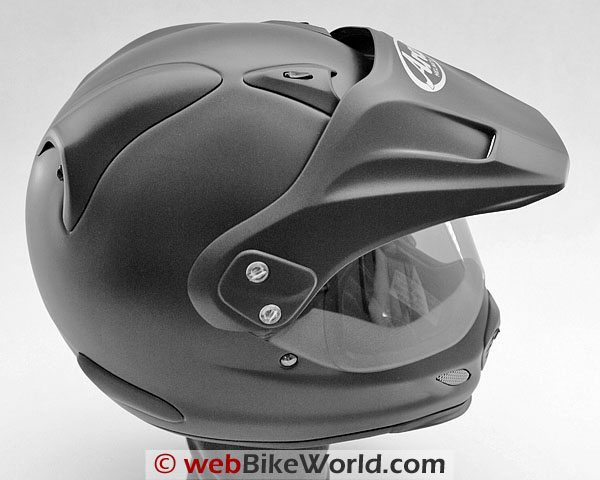
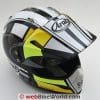
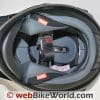
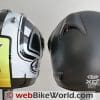
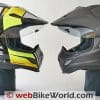
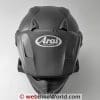
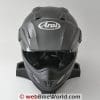
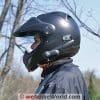
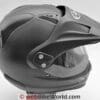
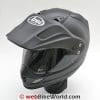
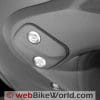
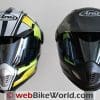
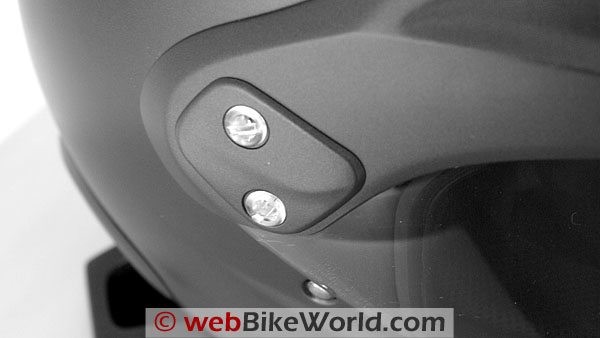
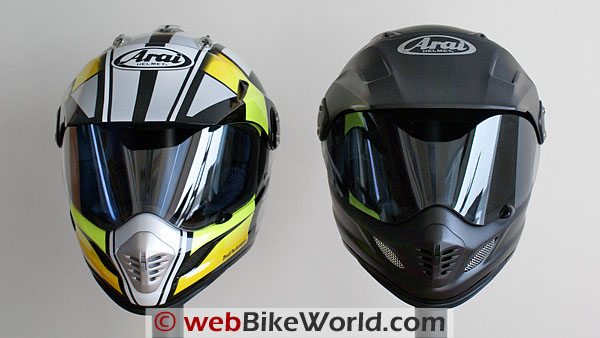 Noise Levels
Noise Levels